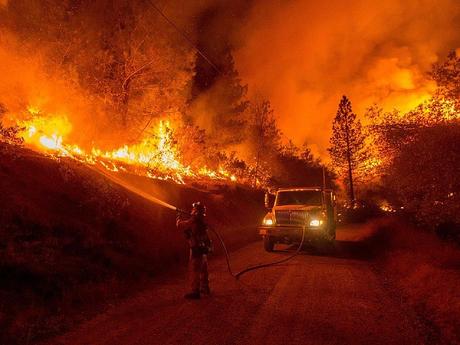The year 2020 is on track to set a record for the Earth’s warmest year since instrument records began in 1880, beating 2016, the U.S. oceans and atmosphere agency, National Oceanic and Atmospheric Administration (NOAA) is projecting.
Since no El Niño event declared in the tropical Pacific Ocean, which tends to provide a natural boost to already elevated global temperatures due to the human-caused accumulation of greenhouse gases in the atmosphere, this is somewhat unexpected.

Based on statistical modeling now, the NOAA projected late last week that 2020’s first quarter is off to a near-record warm start, and the second-warmest January through March period since instrument records began in 1880.
In the first quarter of the year, both Europe and Asia had their warmest. Only the year 2016 was warmer during this period because of an unusually intense El Niño event in that year.
The differences in global temperature from the average in February and March were unusually among the largest of any of the 1,680 months in the records of the agency. The second-largest anomaly of any month was March, said the head of climate monitoring, Derek Arndt, at NOAA’s National Centers for Environmental Information in Asheville, N.C., in a news conference call.
In NOAA’s temperature database, February and March were the warmest two non-El Niño months, Arndt said.
March considered as the 44th straight March and 423rd consecutive month that had global average temperatures at least nominally above the 20th-century average, he said. Since 1991, March has warmed by 1.2 degrees Fahrenheit (0.7 Celsius), he said.
What’s more in 2020 prediction?
Usually, in the case of the El Niño event, temperatures in the tropical Pacific must rise above a particular threshold. However, despite the lack of an officially-declared El Niño, in recent months, ocean temperatures have nevertheless been running above average, Arndt said, contributing to the warm start to 2020.
In 2016, the front-loaded anomalous warmth was because of El Niño conditions that reached its highest point early in the year, before easing as the El Niño diminished later, he said. This year’s first quarter has run neck to neck with the temperatures of 2016, and if global monthly average temperatures remain relatively steady during the rest of the year, 2020 will be on the top spot, he said.
There is a 99.9 percent possibility that 2020 will end up being a top 5-warmest year, the oceans and atmosphere agency found.
“A lot of that has to do with the fact that the year 2016 became the warmest year on record largely because it was very, very warm in the first half of the year, and it was actually not nearly as impressively warm in the second half of the year,” Arndt said. “So the way this might play out is, by staying close to 2016 early on, it does look like a better than half probability that we will finish the year warmest on record.”
It is not just a guess at the final temperature ranking for the year the NOAA is making. The scientists are using a statistical model that takes monthly temperatures during the past four decades generating about 10,000 potential outcomes. Including March data, about three-quarters of the model runs showed 2020 would at least nominally beat 2016.
El Niño or La Niña conditions not incorporated in this model, the latter of which can dampen global average temperatures. Therefore, if either of these phenomena develops, the projection may be off-target.
Separately, Gavin Schmidt, who leads Goddard Institute for Space Studies of NASA in New York, puts the odds of a record this year based on data set of NASA with slightly different rankings than has NOAA, which is at closer to 60 percent. However, applying NOAA’s methods to NASA’s monthly data, the odds would increase to 67 percent, he said.
Among other temperature monitoring agencies, the U.K. Met Office also has forecast 2020 will be one in the top 5 warmest years on record.
However, climate scientists do not much emphasize annual rankings for monitoring and attributing global climate change. The focus is more on long-term trends in greenhouse gas emissions, air and sea temperatures, and climate indicators, including melting glaciers, sea-level rise, and changes in precipitation patterns.
The coronavirus pandemic caused sudden cut in global carbon emissions will not affect global average surface temperatures shortly because the land and oceans respond to greenhouse gases’ amount in the air, rather than emissions rates.


